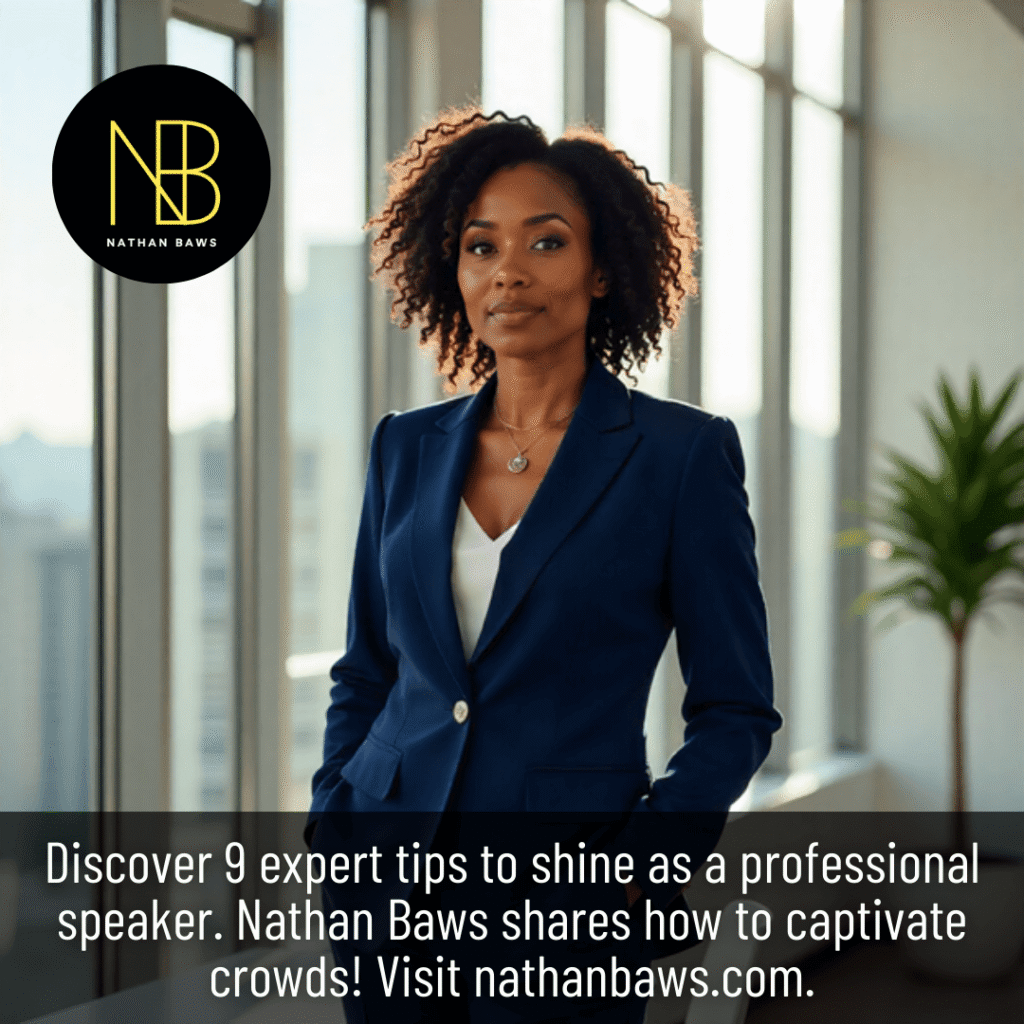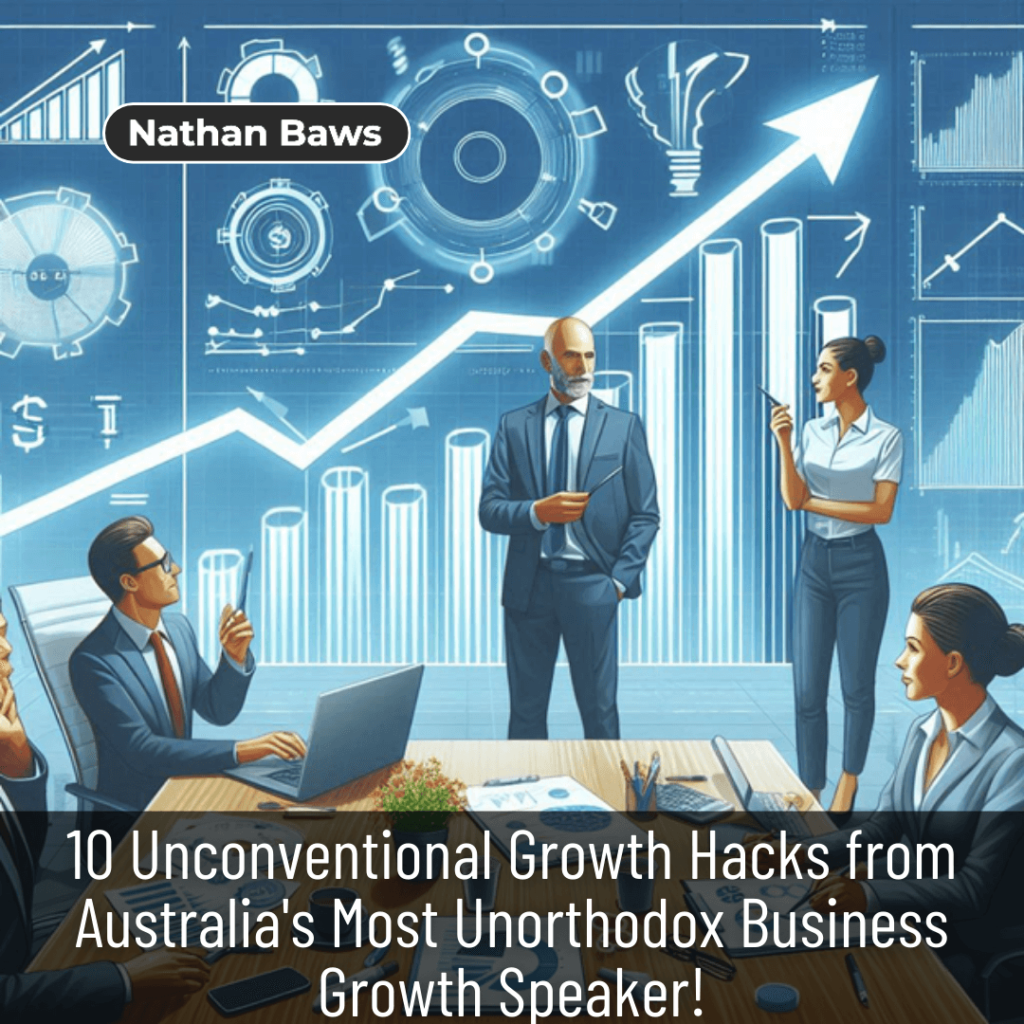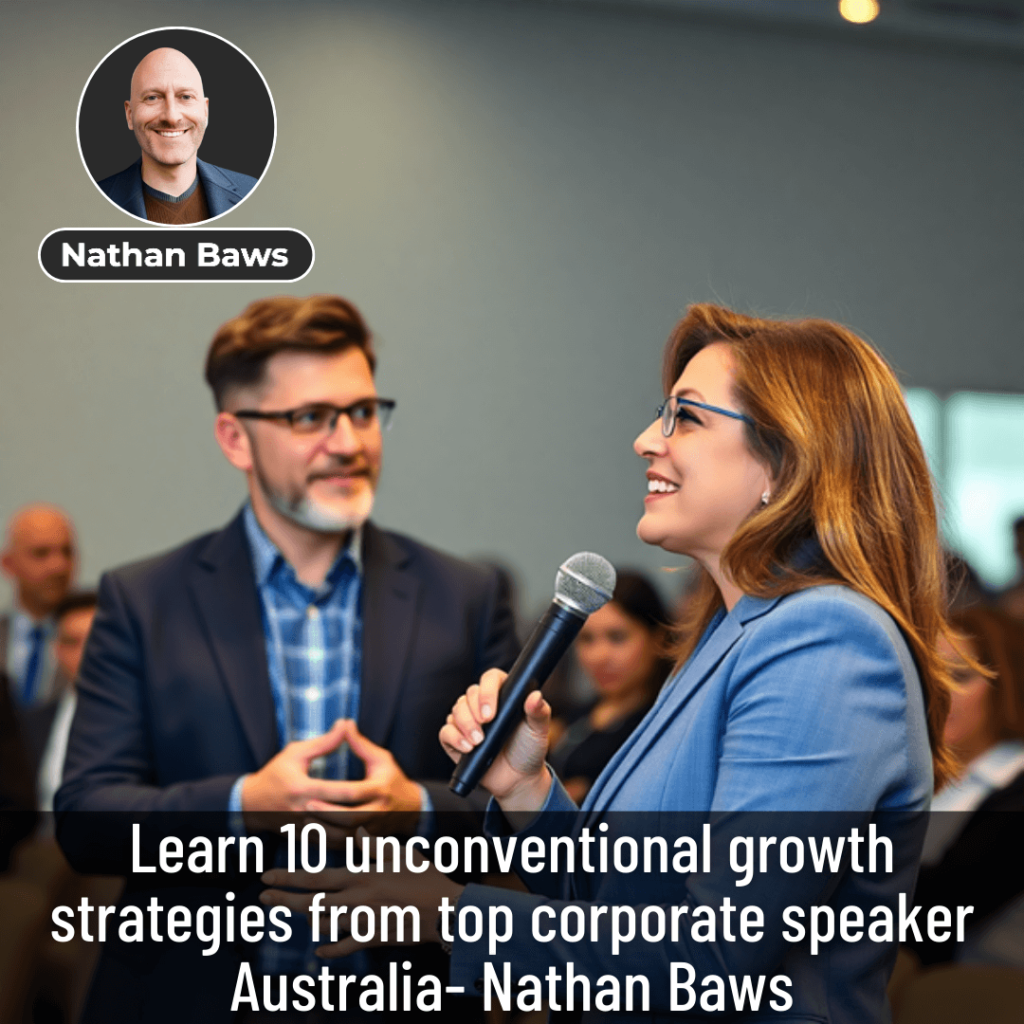Introduction
Have you watched a professional speaker walk on stage and suddenly the whole room listens? It looks easy, but it is not. That is what this is about. My name is Nathan Baws. I have worked with many professional speakers across Australia. I have seen what makes a talk work. I have seen what makes people lose interest. You need to be clear. That is it. Here are nine things that help you be a professional speaker people remember.
1. Kick Off with a Cracker of an Opening
As a professional speaker, you’ve got about 30 seconds to make the crowd lean in, or they’ll be scrolling their phones. A ripper opening sets the tone for your whole talk.
Why First Impressions Are Everything
I’ve seen talks bomb because the speaker started with a dull thanks for having me. It’s like serving plain bread at a barbie—no one’s excited. A professional speaker needs to hit the ground running. Try a punchy question, like, Who’s ever zoned out in a boring presentation?” or a stat, like, “70% of audiences forget talks without engagement. It’s your handshake with the room—make it firm.
Crafting a Hook That Lands
Your opening’s like the trailer for a blockbuster flick. At a Brisbane gig, I kicked off with, Raise your hand if you’ve ever wanted to walk out of a meeting. Hands shot up, and we were mates already. Keep it short, audience-focused, and tease the value you’ll deliver. That’s how professional speakers grab attention.
Stuff to Dodge
Do not start with your life story. Do not say things like I’m happy to be here. Leave out icebreakers like share your favourite hobby. A professional speaker gets to the point. Say something helpful straight away so people stay with you.
2. Structure Your Talk for Clarity and Impact
A talk needs to be clear. If it jumps around, people stop listening. A professional speaker keeps it simple so the message is easy to follow.
The Power of a Solid Plan
Studies show structured talks boost retention by 60%. Break your talk into three to five key points, like Connect, Share, Apply. Signpost each bit—say, “First, let’s talk connection”—to guide the crowd. A professional speaker’s talk feels like a journey, not a wander.
Building a Clear Talk
Start with an intro that sets your goals. For each point, explain the idea, back it with evidence (like a stat or case study), and give a practical tip. For example, when covering connection, suggest a quick audience poll and note, Polls increase engagement by 40%. End with a recap. Professional speakers who structure well ensure ideas land.
3. Engage Your Audience Like a Pro
A professional speaker who just talks and talks loses the room. People switch off. You need them involved to keep them listening.
Why Engagement Matters
When people take part, they remember more. It can help by as much as 70%. It works with business people, students, or local groups. A good talk feels more like a two-way chat. A professional speaker knows how to bring people in.
Practical Engagement Tools
Ask questions they can answer, like, What is one change that has helped your work? Do a short activity, maybe get them to talk in pairs for one minute. Use a quick poll, like, Thumbs up if you tried a new idea this year. These small things keep people awake and involved. A professional speaker uses these to build connection.
Tailoring to Your Crowd
Young people like games. Business people prefer real examples. At a talk in Perth, we asked managers to share a success from work. It linked to our message. Watch how people react. If they nod, you are doing well. If they look bored, change your approach. A professional speaker pays attention and adjusts to keep the room with them.
4. Use Stories to Make Ideas Pop
Stories turn dry points into relatable gems. A professional speaker uses them to clarify and connect.
Why Stories Are Gold
Our brains hold onto stories 65% better than stats alone. A tale about a team’s turnaround or a small win makes your talk vivid. It’s like adding a bit of spice to a meat pie—simple but brilliant. Professional speakers lean on stories to make their message stick.
Picking the Right Story
Choose examples that fit your audience. For a business crowd, share a company’s success, like a Melbourne firm that boosted sales 15% with a new tactic. For educators, use a classroom win. Keep stories tight—two minutes max—and tie them to your point. Professional speakers make stories work for the room.
Keeping It Balanced
One story per point is enough. In a recent talk, we shared how a Canberra startup used feedback to grow, backed by a 20% efficiency stat. Mix stories with data to keep your talk credible. A professional speaker’s stories add heart without stealing the show.
5. Build Confidence with Smart Prep
Confidence is the backbone of a great professional speaker. Preparation ensures you shine, no matter the stakes.
Why Prep Is King
Knowing your talk cold lets you focus on the crowd, not your notes. It also equips you for curveballs, like tricky questions. Rehearsing builds a natural flow, so your talk feels like a yarn with a mate, not a script. Professional speakers prep to own the stage.
How to Prep Effectively
Outline your talk, then practice aloud 5-10 times. Record yourself to catch fillers like um. Test with a colleague for feedback. Time it to fit, leaving space for Q&A. We’ve coached professional speakers from shaky to polished with this method, and it’s a game-changer.
Taming Those Nerves
Nerves hit everyone. Try deep breathing: four seconds in, hold, four out. Visualise the crowd cheering. A client used these to nail a national conference, and the room went wild. A professional speaker who preps well turns nerves into energy.
6. Adapt to Your Audience’s Energy
No two crowds are alike. A top professional speaker reads the room and tweaks their talk to keep everyone hooked.
Why Adaptation Is Crucial
A talk for teens will not work for CEOs. You need to know your audience—their age, role, and what they care about. A professional speaker who adjusts the message stays relevant, no matter the crowd.
Reading and Responding
Research your crowd beforehand. During the talk, spot cues: nods mean you’re on track, restlessness means shift. If energy dips, toss in a quick question or activity. In a Brisbane event, we pivoted to a poll when execs seemed distracted, and it saved the talk. Professional speakers flex to win.
Practical Tweaks
For a lively group, add a fun task; for a serious one, lean on stats. Ask, Share a challenge you’ve faced, to draw out quiet crowds. A professional speaker’s flexibility ensures their talk lands with any audience, from young to old.
7. Use Visuals to Boost Your Message
A professional speaker with smart visuals can make their talk clearer and more engaging, amplifying their impact.
Why Visuals Work
Visuals increase understanding by 50%. A clean slide or prop, like a graph showing team growth, clarifies complex ideas. A professional speaker’s visuals add polish without stealing focus.
Choosing the Right Visuals
Keep slides simple—minimal text, clear images. Use charts for data, like, Engagement rose 25% with this tactic.” Avoid cluttered slides or tacky clipart. In a Sydney talk, we used a single team photo to illustrate collaboration, and it hit home. Professional speakers make visuals support their words.
Avoiding Overload
Don’t drown your talk in slides. One per key point is plenty, and practice your tech setup to dodge glitches. A client’s talk soared with simple visuals, keeping the focus on their message. A professional speaker uses visuals to enhance, not dominate.

8. Close with a Bang and a Plan
Your closing is your last chance to inspire. A professional speaker uses it to recap, motivate, and spark action.
Why a Strong Close Counts
A weak close—like trailing off—leaves the crowd flat. A powerful one recaps your points, ties back to your opening, and gives a clear next step, like trying a new strategy. A professional speaker’s closing makes their talk unforgettable.
Crafting a Killer Finish
Summarise each point: “We covered hooks, structure, and engagement.” Add a call to action, like, “Try one tip this week.” End with a punchy line, like, Great speakers don’t just talk—they transform.” This inspires and lingers.
Avoiding Flops
Don’t rush or toss in new ideas. Skip vague endings like “That’s it!” In a recent talk, we asked attendees to commit to one action, and many followed through. A clear, motivating close ensures a professional speaker leaves the crowd pumped.
9. Handle Q&A Like a Champion
A Q&A session can make or break your credibility. A professional speaker uses it to deepen connection and show expertise.
Why Q&A Matters
Questions let you address audience needs directly, showing you’re a speaker who listens. They also clarify points and build trust. A strong Q&A turns a good talk into a great one.
Preparing for Questions
Anticipate common questions based on your topic. For example, if you’re talking leadership, expect, “How do I motivate a tough team?” Practice concise answers. If stumped, say, “Great question—let’s explore that after.” We coach speakers to prep for Q&A, and it pays off.
Engaging During Q&A
Repeat questions to ensure everyone hears, and keep answers short—30 seconds max. In a Melbourne talk, we handled a curveball question with a quick example, and the crowd loved it. A professional speaker’s Q&A is a chance to shine, not stumble.
Conclusion
Speaking isn’t just about getting words out. It’s about being heard, understood, and remembered. If you’re working on becoming a better professional speaker, that takes more than practice—it takes intention.
We’ve helped people tighten their message, slow down when it counts, and speak like themselves—not like a script. If that sounds like something you need, head to nathanbaws.com. We’ll help you grow into the professional speaker you’re meant to be.mple visuals, keeping the focus on their message. A speaker uses visuals to enhance, not dominate.
FAQs
What makes a standout professional speaker?
A standout professional speaker gives clear, useful ideas. They use stories and facts that suit the crowd. Good prep and adjusting to the room help them connect.
How can a speaker beat stage fright?
Stage fright is normal. A professional speaker prepares well. Breathe slow to calm down. Picture the crowd liking it. Asking a question early also helps.
Why are stories key for a professional speaker?
Stories help people understand and remember. Short, real stories bring ideas to life. A professional speaker uses them to make the message stick.
How should a professional speaker start their talk?
Start with a hook—a question, stat, or scenario. For example, “Who’s sat through a dull presentation?” grabs attention. Avoid generic intros like “thanks for being here” or long bios. Make it audience-focused and tease your talk’s value. A strong opening signals a professional speaker is delivering an engaging, impactful session from the start.
How does a speaker make talks actionable?
Offer specific tips listeners can use immediately. Instead of “inspire your team,” suggest a daily 10-minute huddle, backed by a 20% productivity stat. Break tips into clear steps. Actionable content makes a professional speaker’s talk a tool, not just a speech, ensuring it’s valuable.
Why is body language vital for a professional speaker?
Body language shows confidence. Stand tall. Use your hands the right way. Look at people. Slouching or fidgeting distracts. Good body language keeps your message clear.
How does a professional speaker keep audiences engaged?
Ask questions. Do a quick poll. Small tasks help. Change your style if they lose focus. A professional speaker keeps it like a two-way talk.
How much prep does a speaker need?
Practise 5 to 10 times. Say it out loud. Record yourself. Get feedback. Time your talk. A professional speaker prepares well to sound natural.
How does a professional speaker adapt to different audiences?
Know who they are. Watch their faces. Nods mean good. Restless means change your pace. A professional speaker adjusts to stay connected.
How does a speaker know their talk was a success?
Look for reactions—nods, questions, or post-talk chats show engagement. Feedback forms or follow-ups, like attendees reporting new strategies, confirm impact. Success means listeners apply your tips, like trying a new approach. A great professional speaker inspires action and leaves a lasting mark.


